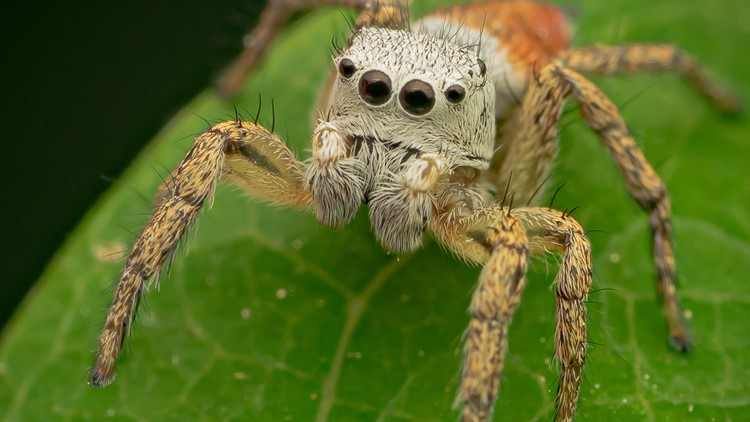NEWTON COUNTY, Ind. — Though researchers scoured grasslands at Kankakee Sands in the hopes of finding one, it wasn’t until they checked a portion of prairielands on the property’s eastern edge that they came across a tiny jumping spider — much smaller than the size of your fingernail.
From inside a battery-powered, spider-catching vacuum, volunteers gawked as a habronattus, or paradise jumping spider, stared back at them from the multifaceted viewpoint only eight eyes can afford.
"We knew immediately this was probably a record find for the state," said Rick Malad, a volunteer affiliated with the team credited with reporting the discovery at Kankakee Sands in June.
Their encounter marked the first time a paradise jumping spider was recorded in Indiana. While the finding was not a total surprise for volunteers — and the spider's existence had already been documented in other nearby states — it thrilled all the same.
“Going into the day, the habronattus was kind of on our radar because we knew it would be good habitat for it. But, as far as that particular spider, we didn't necessarily expect to find it,” Malad said.
The discovery was made as part of a yearly 24-hour trek into Kankakee Sands, put on by the Indiana Academy of Sciences BioBlitz program for nearly a decade, that works to document which invertebrates, mammalian or bird species might be calling the restored prairielands in western Indiana home.
Paradise jumping spiders are found throughout most of the eastern part of the United States and as far north as the Pacific Northwest, and are distinguished by iridescent, pinkish bums and longer third legs.
Wily hunters with an appetite for ground-dwelling invertebrates — whose commitment to their own safety is ensured by a thin line of silk they propel out their backside to repel off and create an eponymous jumping illusion — they are generalist predators who will eat just about anything they can catch. At 7mm max, they'll take what they can get.
"If they missed their mark, they can they can pull themselves back up. They will also build hides. If you, say, unfold a leaflet stuck together, you might find what looks like a silk cocoon, basically. And jumping spiders will use that kind of like their home base," Malad said.
That one was found alive and thriving in a part of Indiana, which was once 8,000 acres of agricultural land reclaimed specifically for ongoing restoration, portends well for the health of that area's ecosystem.
"You can't have predator species without prey species. And, the prey species will be thriving if the plant species are. If there's not native plants there to support the prey species, then the spiders aren't going to be there," Malad said.
The jumping spider's official recording doesn’t mean the species was extinct — or even necessarily freshly introduced — to Indiana. Volunteers believe it was likely gaps in the state's official records that led the spider to be overlooked.


Casey Venable, a recent graduate of the University of Indianapolis credited with first spotting the spider, said she was shocked at the state's lack of documentation surrounding what spiders live here.
"This species has been documented in surrounding states but somehow slipped through the cracks of Indiana records," Venable said in a statement about the encounter. "In fact, Dr. Marc Milne, professor of biology at the University of Indianapolis, has added hundreds of spiders to Indiana’s list in just the last decade. To me, it’s amazing these discoveries are still being made in 2023."
It's a discovery that volunteers hope to find more of as restoration continues at Kankakee Sands.
"That's going to be a very robust ecosystem up there. That place is certainly a bastion for a species like that, that might not be able to thrive in an agricultural setting, let's say," Malad said.


